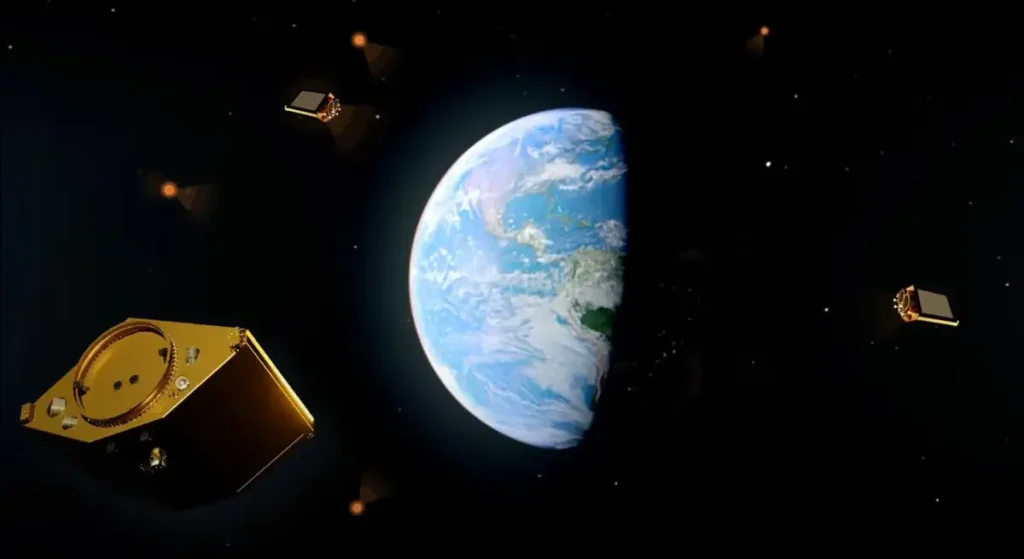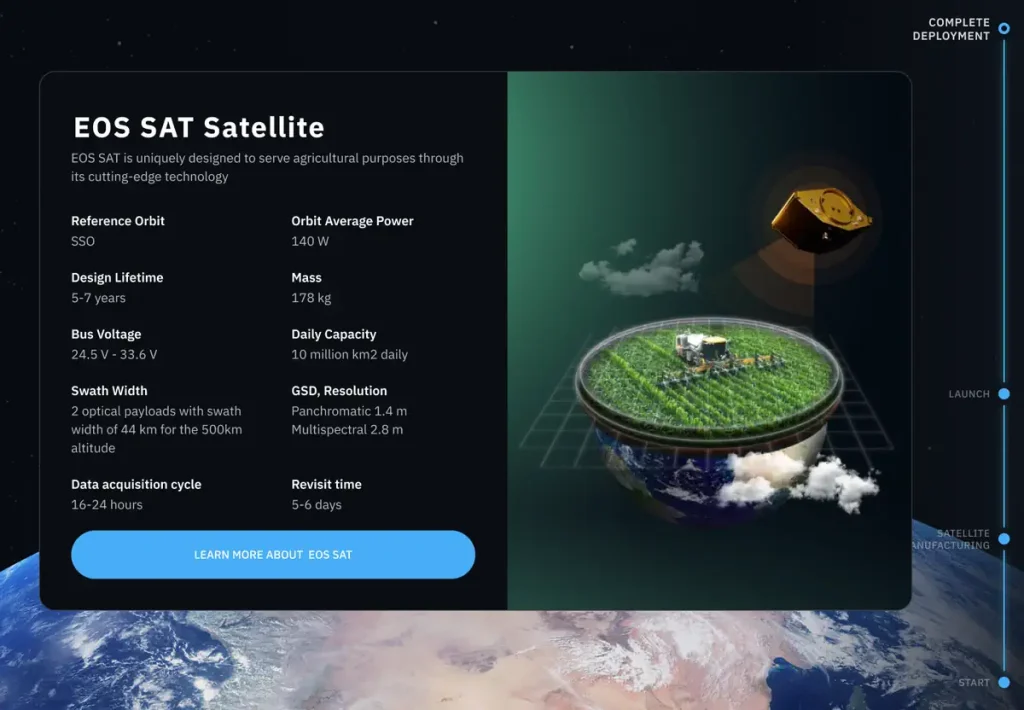EOS Data Analytics is a company, developing technological solutions and providing geospatial data analytics worldwide. Founded by Dr. Max Polyakov, the company applies years of experience and deep technical knowledge to provide reliable and valuable data for agriculture and more than 20 sectors. The solutions created by EOSDA help to make effective business decisions and increase production sustainability to decrease the negative impact of agricultural production on our planet.
By 2025, EOSDA plans to launch the EOS SAT satellite constellation consisting of seven optical units. They will become a source of the company’s own data that helps to complete a full data analysis cycle, including collecting, processing, and obtaining valuable insights.
Among companies developing satellite data-driven software like a crop monitoring system, EOSDA will be the first to launch its own satellite constellation with 13 agro-related bands.
The Launch of EOS SAT-1

On January 3, 2023, the SpaceX Falcon 9 rocket delivered EOS SAT-1, the first unit of the future satellite constellation, into the low Earth orbit. It was launched from the Cape Canaveral Space Force Station in Florida. Like the other six future satellites, this one was created by Dragonfly Aerospace.
Along with precise ag monitoring software developed by the company, the launch of the first satellite for agriculture needs is another company’s contribution to implementing precision farming technologies and maintaining sustainable farming worldwide.
By 2025, the EOS SAT project is planned to be brought to total production capacity. It will provide global satellite crop monitoring for 98.5% of agricultural land and forests on our planet.
In addition to crop growth tracking, EOS SAT will enable growers to detect threats to plants on time, including heat and cold stress, and the spread of diseases, pests, and weeds. Thanks to this project, agricultural businesses worldwide can use satellite data to optimize the consumption of resources, fertilizers, and crop protection products. It will help reduce soil chemical contamination, decrease fuel consumption and manage irrigation systems more efficiently.
Characteristics of EOS SAT Satellites
With an average power of 140 W, the constellation will move in a sun-synchronous orbit. It is calculated that the service life of each satellite will be up to seven years. The constellation will provide panchromatic (1.4 meters resolution) and multispectral (2.8 meters resolution) images with a three-day revisit time. It will greatly improve the crop monitoring satellite service and the detection of changes in farmland. Thirteen agro-related bands with unique settings will also play a crucial role in meeting the pressing needs of the industry.
EOS Data Analytics will gain many new features, including near-real-time data acquisition and image quality improvement, by 2-8 times. The orbital frequency will also be increased 5-7 times. In addition, having its own data source at its disposal, the company will be able to use them to develop corporate agro-industrial models to speed up data processing.

Field Monitoring Data
The EOS SAT project is created to provide the company with a massive amount of data needed to meet the needs of agriculture. It is crucial because most companies in this industry depend on third-party satellite imagery providers and have no control over the frequency of imagery or the quality of the sensors.
The capabilities of the satellite constellation will include more than providing field data and performing crop monitoring tasks. Farmers, insurers, traders, and other stakeholders will be able to get comprehensive analytics provided by the company’s R&D specialists. EOSDA can develop customized solutions on request for various industries.
The constellation will enable the company to analyze space-derived data in combination with information on the soil type, yields, historical weather, and agronomic data. To make better decisions, farmers can use valuable insights, including soil moisture data, vegetation index values, weather analytics, and yield forecasts. It can also help to understand various factors that affect field productivity better.
The large volume of data obtained independently of a third party will give the company more opportunities to provide every niche in agriculture with more accurate analytics. It will help to effectively implement sustainable farming practices and apply the planet’s resources rationally. With better information about soil and plant needs, farmers can increase productivity for global food security while growing healthier food.
Conclusion
The mission of EOS Data Analytics is to use space technologies for the benefit of humanity. Climate change today creates an urgent need to adopt sustainable practices for farming to thrive and maintain food security.
The EOSDA approach is based on providing reliable satellite data and high-quality analytics to solve global problems. EOS SAT will be a reliable source of data, enabling growers to allocate resources better based on plant needs and increase field productivity by being aware of changes and potential threats. It will also help to reduce the negative impact of farming on the environment.

Great!